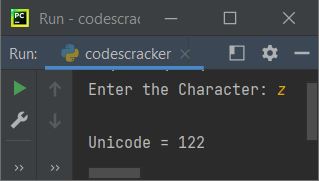- Python Built-in Functions
- Python All Built-in Functions
- Python print() Function
- Python input() Function
- Python int() Function
- Python float() Function
- Python len() Function
- Python range() Function
- Python str() Function
- Python ord() Function
- Python chr() Function
- Python ascii() Function
- Python pow() Function
- Python type() Function
- Python List Functions
- Python list() Function
- Python insert() Function
- Python append() Function
- Python extend() Function
- Python pop() Function
- Python remove() Function
- Python reverse() Function
- Python sort() Function
- Python sorted() Function
- Python Dictionary Functions
- Python dict() Function
- Python update() Function
- Python get() Function
- Python keys() Function
- Python setdefault() Function
- Python fromkeys() Function
- Python items() Function
- Python popitem() Function
- Python Tuple Function
- Python tuple() Function
- Python Set Functions
- Python set() Function
- Python frozenset() Function
- Python String Functions
- Python split() Function
- Python join() Function
- Python format() Function
- Python replace() Function
- Python Iterator Functions
- Python iter() Function
- Python min() Function
- Python max() Function
- Python sum() Function
- Python count() Function
- Python index() Function
- Python copy() Function
- Python clear() Function
- Python next() Function
- Python filter() Function
- Python enumerate() Function
- Python zip() Function
- Python reversed() Function
- Python Number Functions
- Python abs() Function
- Python bin() Function
- Python oct() Function
- Python hex() Function
- Python round() Function
- Python divmod() Function
- Python complex() Function
- Python File Handling Functions
- Python open() Function
- Python read() Function
- Python readable() Function
- Python readline() Function
- Python readlines() Function
- Python write() Function
- Python writable() Function
- Python writelines() Function
- Python close() Function
- Python seek() Function
- Python tell() Function
- Python flush() Function
- Python fileno() Function
- Python truncate() Function
- Python Class Functions
- Python object() Function
- Python property() Function
- Python getattr() Function
- Python setattr() Function
- Python hasattr() Function
- Python delattr() Function
- Python classmethod() Function
- Python staticmethod() Function
- Python issubclass() Function
- Python super() Function
- Python Misc Functions
- Python all() Function
- Python any() Function
- Python isatty() Function
- Python bool() Function
- Python callable() Function
- Python globals() Function
- Python locals() Function
- Python dir() Function
- Python id() Function
- Python isinstance() Function
- Python map() Function
- Python repr() Function
- Python slice() Function
- Python vars() Function
- Python Advance Functions
- Python help() Function
- Python hash() Function
- Python breakpoint() Function
- Python bytes() Function
- Python bytearray() Function
- Python memoryview() Function
- Python compile() Function
- Python eval() Function
- Python exec() Function
- Python Tutorial
- Python Tutorial
- Python Examples
- Python Examples
Python ord() Function
The ord() function in Python is used when we need to get the Unicode value from the specified character. For example:
ch = 'A' print(ord(ch)) ch = 'B' print(ord(ch)) ch = '4' print(ord(ch)) ch = '5' print(ord(ch)) ch = 'c' print(ord(ch))
The output will be:
65 66 52 53 99
Python ord() Function Syntax
The syntax of ord() function in Python, is:
ord(character)
Python ord() Function Example
Here is an example of ord() function in Python. This program receives a character from user at run-time of the program, and prints the Unicode value of given character:
print("Enter the Character: ", end="") ch = input() print("\nUnicode =", ord(ch))
The snapshot given below shows the sample run of above program, with user input z as character to find and print its Unicode value:

But the problem is, when user enters an invalid input, like codescracker, then the function raises TypeError exception, because ord() accepts a single character as its parameter. Therefore the program needs to be modified in this way:
print("Enter the Character: ", end="") ch = input() try: uc = ord(ch) print("\nUnicode =", ord(ch)) except TypeError: print("\nInvalid Input!")
You'll get the same output as of previous program's output. Also the program prints Invalid Input! instead of that exception error, when user enters an input that is not a single character.
« Previous Function Next Function »